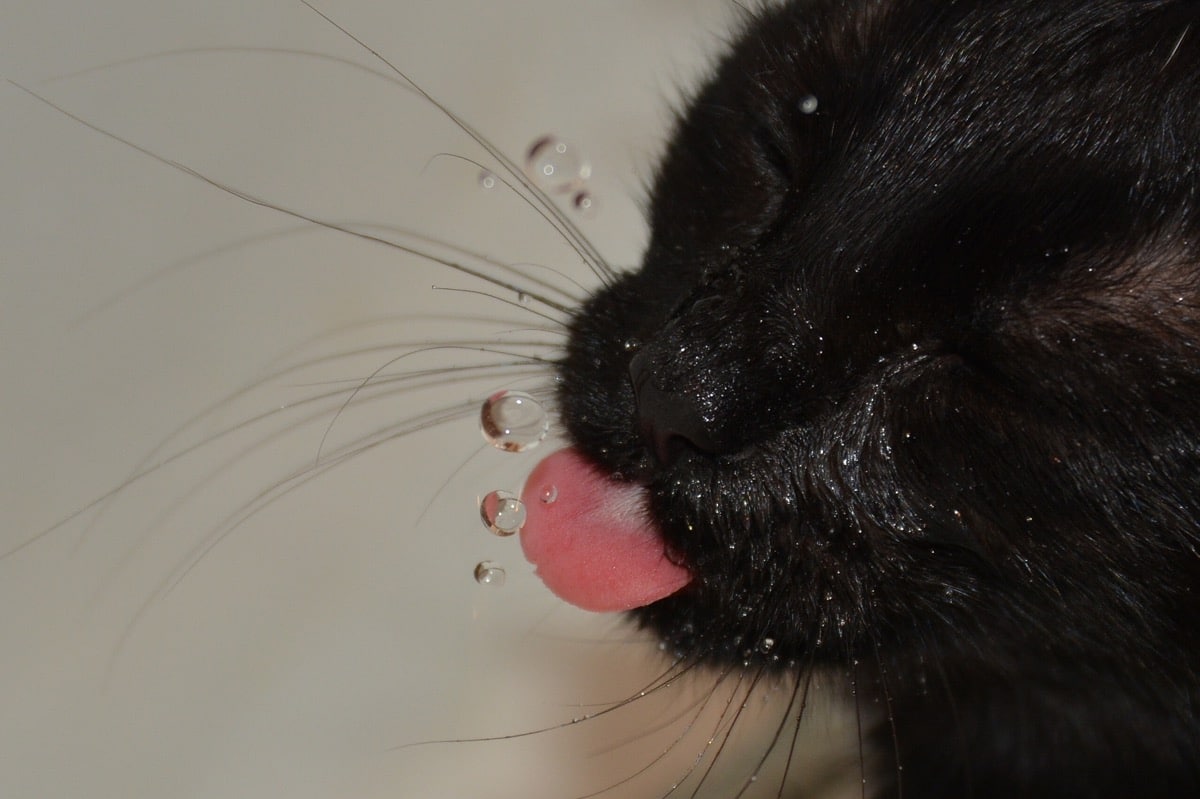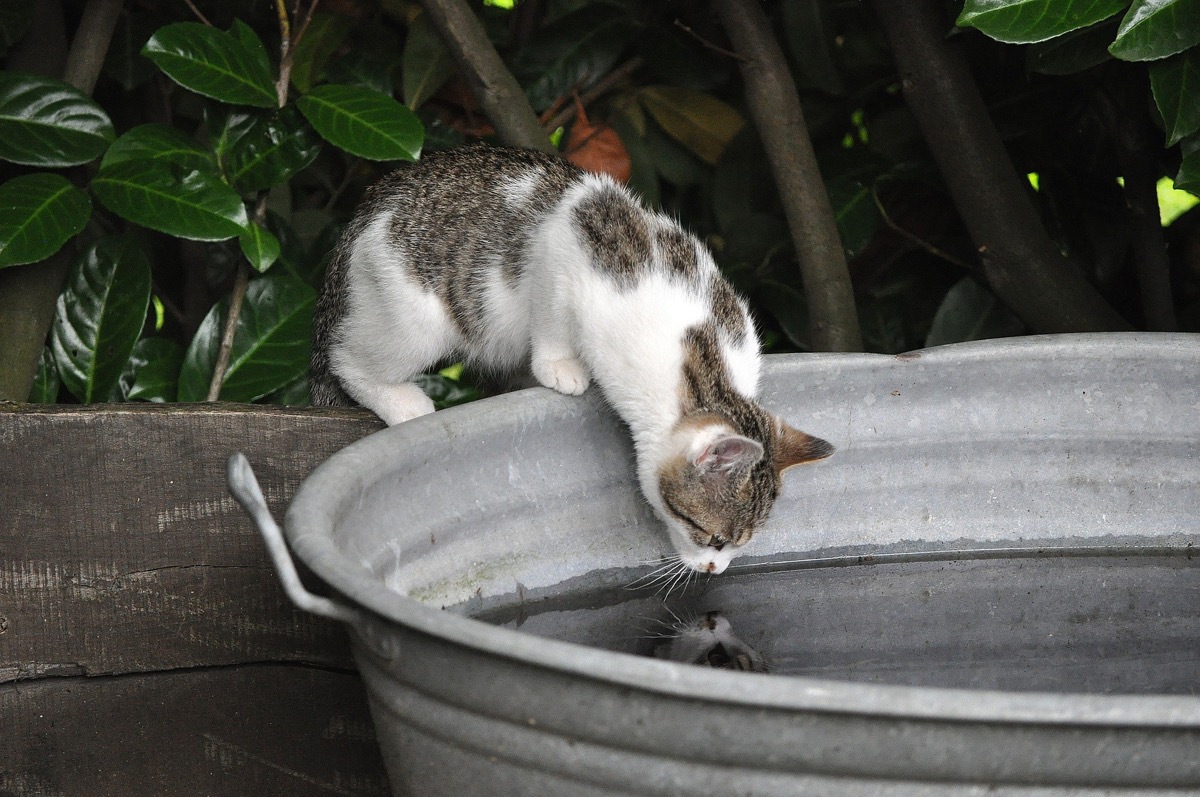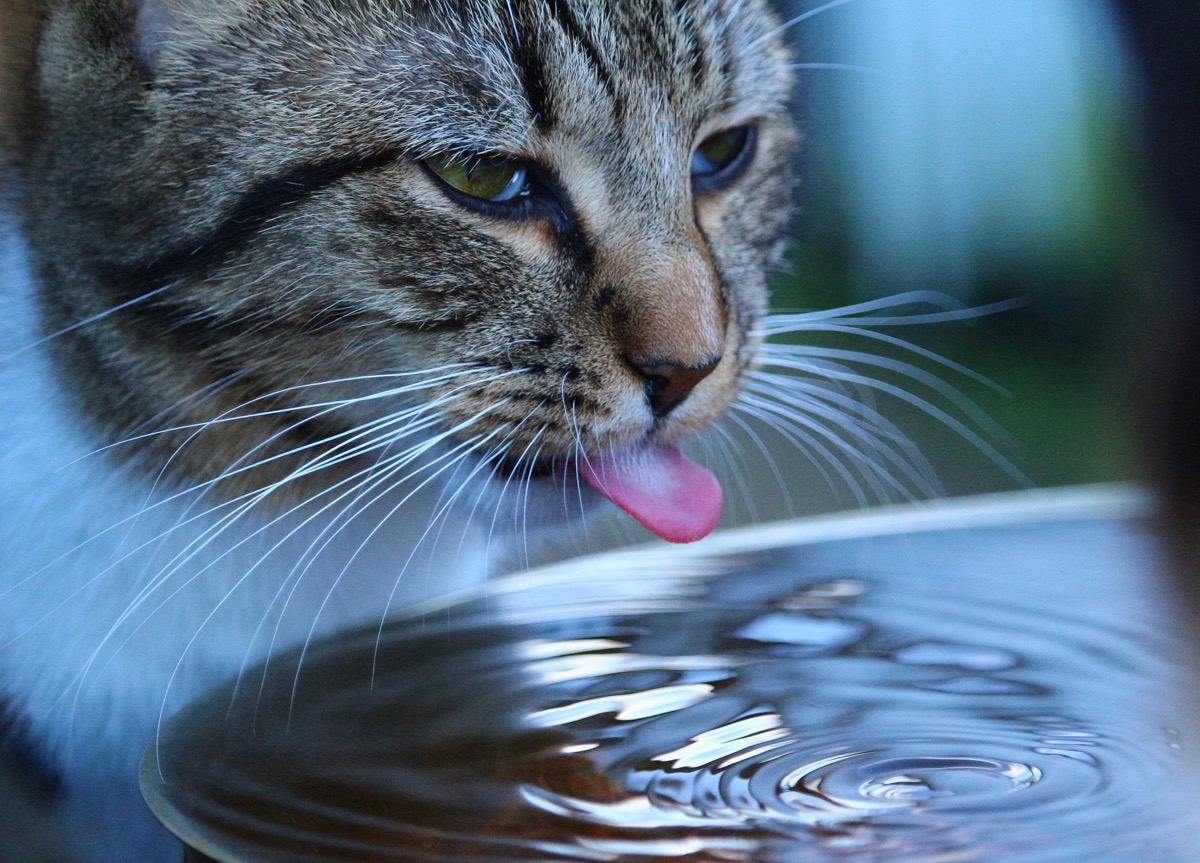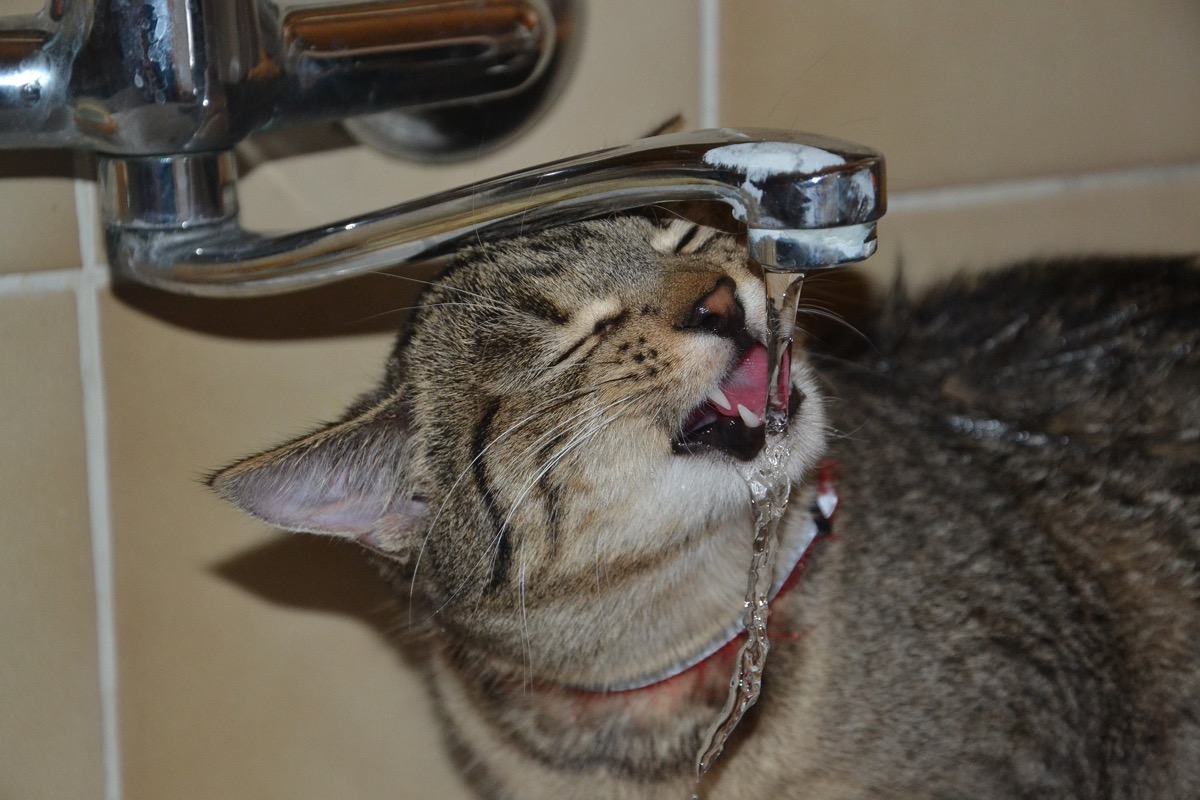
Water is vital. All animals must drink water for our body to function well, but mammals when we are babies do not drink water, but milk. In the specific case of the cat, he needs to drink milk for at least the first month.
In those 30 days you can get so used to it that, when we offer you something else, you do not want it or find it difficult to adapt. What do we have to do in these cases? If you want to know when can a kitten start drinking water and how you can get used to it, don't miss this article.
When can you start drinking water?

Kitty you can start drinking the precious liquid from the first moment you eat solid food, that is, around the third week of age. If he is growing up with his mother, the cat herself, when she goes to the trough to drink, will be the one who unconsciously teaches her little one what to do, since he will imitate her.
In the event that it was an orphan kitten, it will be up to us to teach it. How? With a lot of patience and affection.
Water is essential so that it can continue to grow well. You can give it wet food, but its water needs would not be fully covered and that could lead to problems in the short or medium term.
Why kittens should drink water and NOT milk
Orphaned kittens should drink milk, but older kittens and cats may not tolerate it well… Imagine a kitten. You have most likely imagined a kitten drinking from a bowl of milk, possibly with a bow around its neck. However, kittens that are old enough to be separated from their mothers are old enough to drink water instead of milk. They no longer need milk to survive ...
Time-based need
Kittens need milk for the first few weeks of their lives. The mother of kittens provides the best milk for her needs at that age. However, you can feed orphaned kittens goat's milk, available in many supermarkets. You can also feed them kitten's milk replacement formula. Cow's milk can upset a kitten's stomach and should be used as a last resort. Kittens should drink water by the time they are 4 to 6 weeks old.
Milk is a food, not a drink
Female mammals produce milk to feed their own offspring. Humans use the milk of other mammals to feed their older children and sometimes their pets. Milk, therefore, is a liquid food, not a drink. Water is a drink, used by the body to keep its tissues hydrated and all its organs working properly.
Lactose Intolerance in Cats
Go back to your mental image of a kitten drinking milk. Although this image is popular, many cats cannot digest milk sugar, lactose. This inability to digest lactose comes from the gradual loss of an enzyme that is present in their bodies at birth. Lactose intolerance usually causes diarrhea, but it can have other serious side effects.
Water helps the body to function
Cats cannot tolerate dehydration well. All cats and kittens need water for their bodies to function properly. Water helps the body digest food, eliminate feces, and prevents crystals from forming in a cat's urine. It can also prevent tissues and joints from drying out. Cats can get much of their water needs by eating canned wet food, but they should always have plenty of fresh, clean drinking water.
What to do for a kitten to drink water
Water is vital for cats of all shapes and sizes. When a kitten is with its mother, it takes in most fluids while nursing. However, when it comes time to progress to solid food, some kitties are not interested in water. It may take a bit of creativity to get your furry feline to drink water.
- Fill a bowl with clean, cold water and leave it where your kitty can reach it. Change the water every day and wash the container at least once a week to reduce unwanted bacterial growth. A shallow bowl works best for kittens, as even small animals can reach over the rim for a drink.
- Add some hot water to your kitty's solid food. Water softens food and encourages reluctant drinkers to soak up a little extra moisture. If your kitty is eating dry kibble, let the water soak in for at least 10 minutes before feeding.
- Pour a teaspoon of the tuna juice or low sodium broth into your kitty's water dish.. This adds a bit of extra aroma and flavor to attract a reluctant drinker. Once your kitty is drinking regularly, reduce the amount of juice in each bowl until she is drinking plain water.
And if it doesn't work, try this:
- The first thing to do is soak your food with a little water. At first it must be very little, but as the days go by you have to add more.
- After a week, give him only food once and food soaked in water again. Alternating as many times as necessary until the kitten has eaten all it needs to eat per day.
- At the third or fourth week, when you see that the kitten is starting to get used to it, put a drinker with water and put it near the food. If he ignores it, insert a finger and pass it through his mouth. You will likely have to do this several times a day for a few days.
At this point he should drink without problem, but if he does not, it is very important to take him to the vet to see if he has any health problems.
What are the signs of dehydration in a kitten?
It can be difficult to tell if your cat is really dehydrated simply from her water intake. To be safe, check these signs:
- Loose skin: If you gently 'tent' (lift) some of your cat's fur over his shoulders, he should quickly return to his normal position once released. If your cat is dehydrated, his fur will slide off more slowly.
- Sticky gumsDry, sticky gums can be a sign of dehydration. If a cat's gums are moist and not "sticky," then they are more likely to be well hydrated.
- Depression or lethargyCheck to see if your cat seems especially sleepy or lazy. Are they less likely to greet you when you come home? Are they less playful than usual? Pay attention to these behavior changes.
- Loss of appetiteWhen a cat is not eating, it is often an immediate sign that something is wrong, even if it is not dehydration. If your cat refuses to eat for more than 24 hours, it's time to go to the vet.
- Vomiting or diarrheaAlthough these are not signs of dehydration per se, a cat that is vomiting or has diarrhea will quickly become dehydrated.
- Hollow eyes- A dehydrated cat may appear sullen or sleepy, with sunken eyes or eyes that look somewhat "sad."
- Elevated heart rate - Take a pet first aid course, or on your next vet visit, ask your vet or clinic technician to show you how to check and measure your cat's heart and / or pulse rate to find out if it is higher or lower than normal.
- PantingCats do not usually pant, but they can overheat, which can accompany a case of dehydration.
- Less urination- This is another reason why you should pick up your cat's litter boxes daily - so you can check for changes in urination (and defecation) also remember that a cat that is not urinating might not be able, which can be the sign of a fatal urethral obstruction.
With all this information, you will be able to know not only when a kitten can drink water, but also if it has some signs of dehydration that alert that it needs water as soon as possible in its body.

